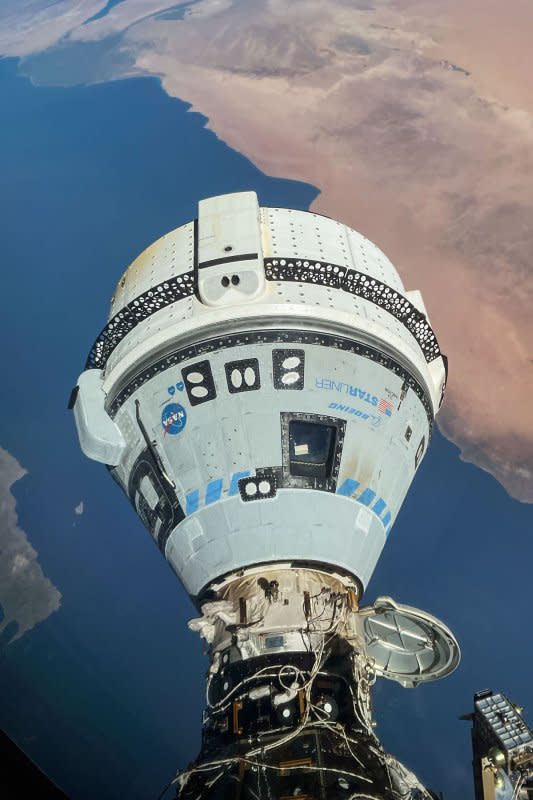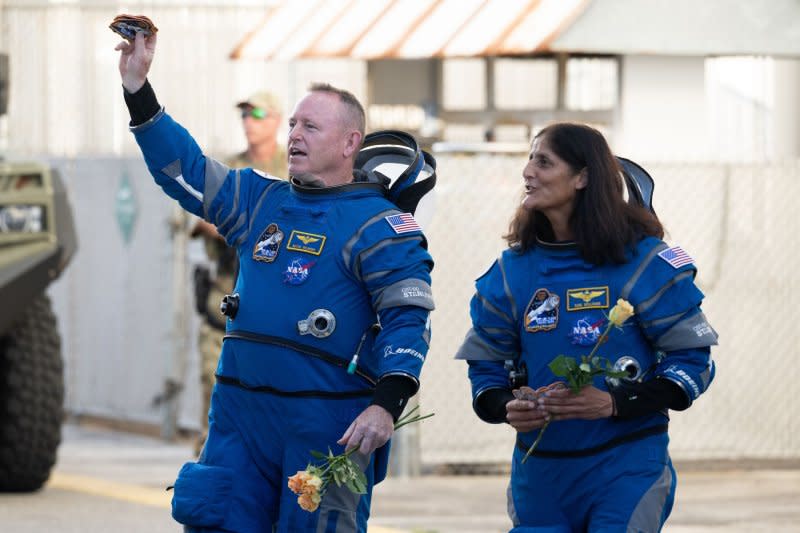Starliner undergoing thruster testing before indefinite return flight

June 29 (UPI) -- An initial eight-day Boeing Starliner test mission to the International Space Station will be extended indefinitely to test the spacecraft's thrusters.
Test pilots Butch Wilmore and Suni Williams are safely aboard the ISS and are not stranded in space, NASA commercial crew program manager Steve Stich said during a briefing Friday.
But there is no targeted return date "until we get the testing completed," Stich said.
"Our plan is to continue to return them on Starliner and return them home at the right time," Stich said. "We have a little bit more work to do to get there for the final return."
The Starliner's service module contains thrusters, helium lines and other systems that NASA officials need to study before discarding the module upon re-entry and allowing it to burn up.

Those components require further study to determine why the Starliner deselected needed thrusters as it approached the ISS for docking on June 6.
The Starliner launched on June 5 after several delays to complete its first crewed mission and final test flight with test pilots Wilmore and Williams aboard.
NASA also plans testing as soon as Wednesday at the White Sands Test Facility in New Mexico to replicate how the thrusters were used during the flight. The testing will take about two weeks.
The Starliner developed helium leaks in five aft thrusters during the launch and while approaching the ISS as the thruster jets pulsed to control the docking procedure.
Helium valves in the service module were closed upon docking, but those valves must be opened to pressurize the helium lines used to power the thrusters.
The questionable thruster jets fired when tested while the Starliner is docked at the ISS while a fifth thruster and produce enough thrust to enable a successful return to Earth.
Stich said the Starliner has many times more helium than needed for the one-day return journey to Earth.
The initial mission was scheduled to last 10 days, including eight while docked at the ISS.
The thruster problems have extended the mission to between 45 and 90 days.
Nine people are aboard the ISS. Four came to the ISS from a Soyuz capsule and three from SpaceX's Dragon.


